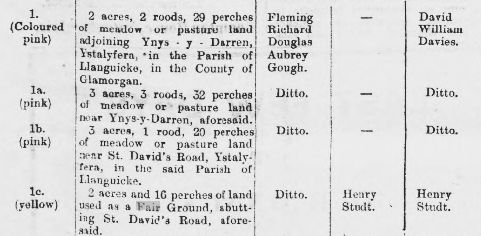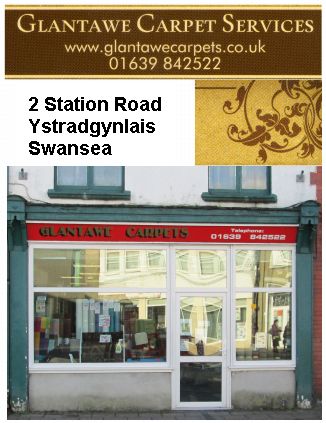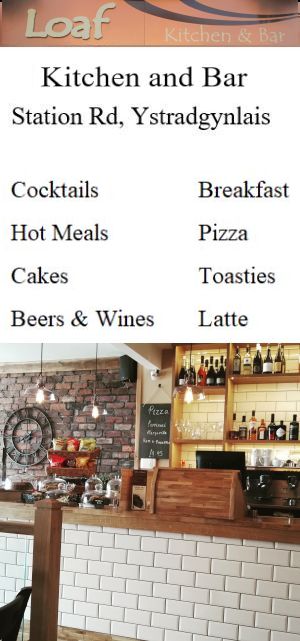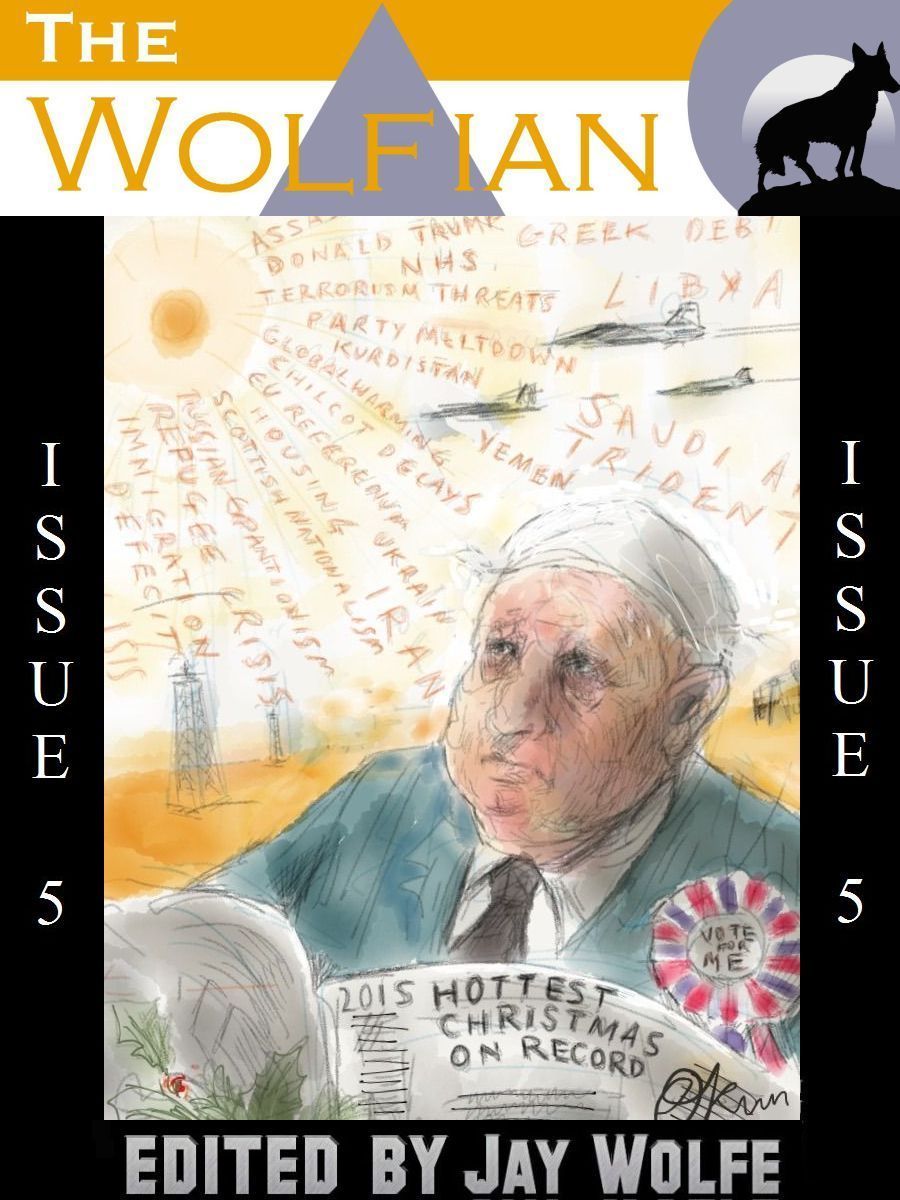Ystalyfera
History and Heritage
Ystalyfera Fair
Ystalyfera Fair was an important event in the social life of the town. This article from the South Wales Voice 24th September 1932 has the author looking back on the fairs of twenty-five years previous compared to those of the present.
A Peep Into The Past
Ystalyfera Fair
Then and Now
"Ystalyfera Fair, I will be there"
My thoughts went back 25 years when I heard some youngsters who were playing on Cyfyng Road, Ystalyfera last week, singing the old verse which we used to sing in Ystradgynlais in those far-off days.
I visited the fair, held on Saturday evening, and was struck with the changes which come with the passing of the years. Perhaps some of the younger generation would like to know a little more about the fairs of the past.
Ystalyfera Fair was a great attraction of the upper Swansea valley in those days. For weeks before the fairs in March and September we saved our pennies for the great event. It was easier to save then than now. There were no cinemas and very few children's newspapers and periodicals. It only meant a little self-sacrifice in the choice of weekly allowance of sweets. Generous aunts and neighbours found that the boys and girls had suddenly developed into very thoughtful individuals. They were anxious to run errands, weed gardens and mind the baby.
I am told that this year's fair is an improvement on its immediate predecessors. This year's September fair was very far behind those of 20 to 30 years ago. Ystalyfera Fair was at its best when it was held in the Swan Field. When building operations compelled its removal to the present fairground, deterioration set in.
Come with me to one of the old fairs at the Swan Field.
The Swan Field
You must not mind the mud. The heavy traction engines have churned up the ground and the rain in the earlier part of the week has helped to give a sticky solution underfoot, something like melted liquorice. There are the usual stalls of sweets and toys - always something for your money. Just to your right is a full-blooded negro holding forth under a spluttering naptha lamp. He claims to cure all the ills that flesh is heir to. Somewhere in far-away Africa he discovered the secrets of herbs. He now offers pills made from those herbs covered in liquorice. His eloquence ranks with those of an M.P. or a "cyrddau mawr" preacher and he sells well. I have never ceased to wonder why such eloquence was wasted on fair fields.
The Side Shows
Before we visit the things that matter, we will look around the side shows. There are plenty of shooting galleries, cocker nut shies, aunt sallies, and hoop-las. The hoop-las are the latest craze. The fat lady, the smallest horse in the world, snake charmers, a boxing booth, tatooed ladies, strong men, and all the rest of them are here again. The bells clang, drums are thumped, and we are all exhorted to "Step this way".
Now for the chief attraction. We must take a ride on the gondolas, there are three to choose from but they are all alike. Magnificent organs, beautifully lit and decorated, play anything from the Hallelujah Chorus to "Has Anybody Here Seen Kelly?". We get quite a long ride for a penny. Just a short distance away is a train hauled by a steam engine. There is a tunnel and station on this little line, and we travel round and round half a dozen times for a penny. Galloping horses and little yachts that go up and down in short jerks are our next discpation.
The Living Pictures
Here we have the latest entertainment of the world, ladies and gentlemen! Three huge ornamented frontages with fine organs and a stage in front, and beautifully illuminated with coloured lamps and big arc lamps which call for regular attention, proclaim that they have bioscope shows inside. The word "cinematograph" is not yet known, and we call the shows the "living pictures". The three shows stand in line, Wardbrook's, Crecraft's, and Dooner's. We shall visit one of them. The crowd comes out of one of the "houses" and we are ready for the next performance. A gentleman imaculately dressed in a grey frock coat and trousers with spats, and wearing a grey top hat and red carnation in addition, tells us that the best show in the fair is about to commence - admission threepence and sixpence. The organ strikes up, and out come some clowns. Their appearance is enough to make us laugh. They do a few turns, spring up over a trapeze, through rings and down polls. We roar. The jokes they crack are hoary, but well told. Next come some dancing girls and they give us about ten minutes' free entertainment.
The playing of "God Save The King" is a sign for the rush up the stairs and after a few prods and pushes we are inside. There are benches in front, but those in the back have to stand on sloping duck-boards.
The light goes out, a piano strikes up, and we see the title of a film on the screen. It flickers so badly that we can scarcely read it, and when the picture comes it is a screaming comedy in which everybody collides with everybody else in a mad chase. There are no thrillers, just a few comics and a sad picture about a prodigal who is too proud to come home. His sweetheart rescues him from death in a snow storm just in the nick of time. Coloured slides of popular songs are then thrown on the screen and we all join in the chorus. After half an hour we are told "The show is all over this time" and we push our way out.
Through the jostling crowds, under showers of water from "teasers" and confetti, we find ourselves out on the road. We spend our last sixpence in a ride on a horse-drawn brake to Ystradgynlais. Yes, we have had a good time.
This Year
This year the fair is not so crowded. There are new attractions. Electric auto-cars which bump about are the only rides. Galloping horses and gondolas are fewer, but the bioscope shows have gone. The little steam train has disappeared - like the trains on the Neath and Brecon Railway between Ystradgynlais and Colbren. We still have the snakes and sideshows; they are just about the same. We are out to make money to-night. We place pennies on sloping slots and these run down onto little squares. If the square is numbered three, you get threepence, and so on. I lose sixpence, my friend is more lucky, he wins 3s 6d.
Now for a real thrill. It is called the "Globe of Death" guaranteed to be the most exciting show in the world. Should we go inside?
In that huge lattice-work steel globe are two lions. Presently a motorcyclist goes in with his machine. A roar and he is off, travelling around and between the lions, and "looping the loop" in the globe. If the lions moved and he collided with them, the rider would be done for - so would the lions in all probability. It is a foolish and dangerous show, but in these days we want thrills, and if a man likes to risk his life that is his affair.
The fine organs are old-fashioned, so we have gramophone records played on amplifying machines. The music is more "tinny" but progress must be maintained. The crowd is not so jolly, but we can go to the "talkies" for a nice show, where we can sit in comfort. There are three halls in Ystalyfera.
Home in a comfortable saloon bus. We switch on the electric light - it is far cleaner and brighter than the old oil lamps. Let us turn on the wireless. There is nothing much on the National to-night. Let us have Paris or Berlin - a turn on a knob and we can have our choice.
Are we happier in this modern age of excitement and comfort than they were twenty-five years ago when pleasures were fewer? - I wonder!
We can look at information about the fair from the Llais during the early twentieth century:-
From the Llais 7th March 1914:-
YSTALYFERA FAIR
Great preparations have been in progress during the week for the holding of the annual Ystalyfera Fair during the weekend. The proceedings commenced on Thursday, when during the afternoon, the flannel merchants were busily engaged in disposing of their wares, and in the evening a larger crowd assembled to enter into the full enjoyment of the variety of attractions provided. It is expected there will be a large influx of visitors from other parts of the surrounding district.
From the Llais 14th March 1914:-
SERVICE FOR FAIR PEOPLE
The Rev J S Jones vicar of Ystalyfera conducted a service for Fair People on the Fair Ground on Sunday afternoon and the proceedings were characterised by much heartiness, the large congregation present joining in the singing of the hymns selected for the occasion. An organette provided accompaniment, the organist being Miss Lewis, one of the Fair people. The vicar also addressed the gathering.
From the Llais 19th September 1914:-
Thursday being Fair day, a great number of people visited Ystalyfera. As usual the weather was anything but promising. Our friends from Carmarthenshire and South Cardiganshire - purveyors of Welsh flannel - had their stalls set up in the Church Hall instead of, as in previous fairs, on the roadside.
From the Llais 30th September 1916:-
The Ystalyfera Fair was held during the weekend and proved a great attraction, many thousands visiting the field.
Flannel was scarce and prices high but there was a great demand. The amusements were very poor.
From the Llais 10th March 1917:-
The spring pleasure and flannel fair was held on Thursday, and will continue on Friday and Saturday. There were a large number of people present as usual but very few attractions.
The flannel fair was held at the Church Hall and trade was brisk, although the prices were high.
From the Llais 9th March 1918:-
Local school children (in Ystradgynlais) were granted half holiday on Thursday, on account of Ystalyfera fair and a number of local ladies availed themselves of Ystalyfera Fair on Thursday, to lay in a stock of Welsh flannel.
From the Llais 21st September 1918:-
The inclement weather and war conditions have certainly had a detrimental effect upon the Fair this weekend. So far as the amusements are concerned there is as much difference between the fairs ten years ago and now as there is between a mountain and molehill.
The flannel fair at the Church Hall was not by any means as well attended as in previous years and the quality of the goods was far below that of "yr hen gwlanennau Cymru", whilst the price was above anything ever thought possible in the days before the war.
From the Llais 8th March 1919:-
The Fair at Ystalyfera this week end, being the first after the cessation of hostilities, was rather brighter than in previous years. There were more amusements at the pleasure, but the flannel fair was not up to the usual standard and the prices were high.
From the Llais 19th July 1919, there is a list of Land Subject to Purchase, which includes "2 acres and 16 perches of land used as a Fair Ground, abutting St. David's Road, aforesaid:-

From the Llais 20th September 1919:-
OUT AND ABOUT
"In the good old days fairs used to be regarded as great events, but things have altered considerably, and little, if any, interest is now taken in them. At one time, the Swan Field, Ystalyfera, upon which houses have now been built, was a scene of the greatest activity on fair days, and amongst the attractions would be four or half a dozen, switchbacks, trains, or merry-go-rounds, three or more cinematograph shows, besides innumerable side shows, hoop-las, coconut shies, shooting galleries, and aunt Sallies. The flannel fair, too, was a great attraction, but this, again, is almost a thing of the past.
There was also a time when Good Friday was the day upon which Sanger's circus visited the town of Ystalyfera. What dense crowds there were, gathered from far and near, and lining the road, eagerly watching for the "turn-out," headed by the band carriage, in which were instrumentalists who were reputed to have played before the Royal family and all the crowned heads and nobility of Europe!
The carriage was followed by elephants, lions in their cages, chattering monkeys, camels, cowboys, Red Indians, ladies on horseback, and, best of all to our juvenile minds, a company of clowns. Clowns are now a thing of the past; but in their days they invariably gave a better show on the front of the pavilion than was given inside. Those were good old days!
Ystalyfera - South Wales

Email Yeargroup:
yeargroup@hotmail.co.uk
Email Wolfian Design:
webdesign@wolfianpress.com

Click the cover to purchase the paperback
How To Write Alternate History is a series of articles by Grey Wolf, examining subjects such as the identity of man, whether man makes the weather, how the everyday in an alternate world is going to be changed and what names for music, vehicles, weapons etc would be different.























